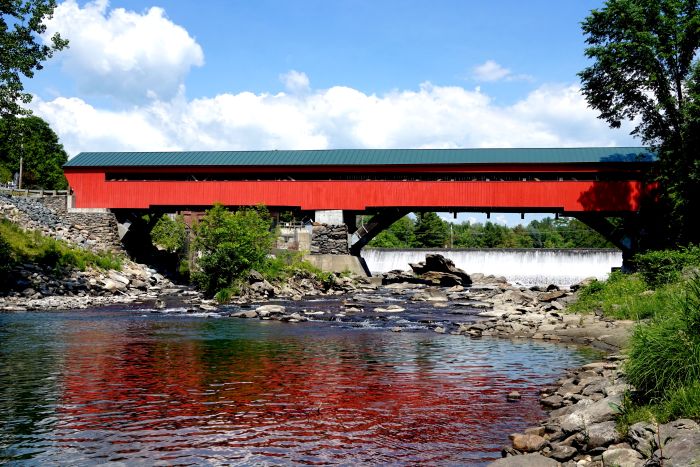Canada Eyes Meander Subdivision For Tourists: New Railway Experiences Await In The Northwest Territories!
Hay River and Pine Point’s CN rail future in doubt as Canada’s government presses for restoration, with new travel prospects on the horizon.
The magnificent Great Slave Lake region in Canada which encompasses Hay River and Pine Point in the Northwest Territories has deep scars and all the dreams which are more than fifty years old, all thanks to the railway powered connections. Locals reminisce about how the railway once provided other communities which were far up north with life. Today, residents and travelers are watching the ongoing debates regarding the Meander Subdivision which are rich in nostalgia and years worth of anticipation for new travelling experiences.
Federal Scrutiny Over Rail Discontinuation
After devastating 2023 wildfires crippled rail infrastructure north of Enterprise, CN Rail decided to end service on the final 22 km stretch to Hay River, igniting concerns about isolation and escalating transport costs for goods and fuel. The Government of the Northwest Territories (GNWT) claims the railway remains a “lifeline” for remote Indigenous communities and vital for year-round delivery of essentials, and has begun adjudication with the Canadian Transportation Agency. Infrastructure Minister Vince McKay urged federal authorities to examine CN’s obligations under the Canada Transportation Act, emphasising the common carrier’s legal duty to maintain the line for Canada’s most vulnerable communities.https://www.trains.com/pro/freight/class-i/northwest-territories-seek-federal-action-to-restore-cn-service-to-hay-river/
Connecting Heritage, Trade, and Tourism
The Meander Subdivision was originally constructed as the Great Slave Lake Railway, built to serve the legendary Pine Point mine, and later adopted by CN Rail as a vital trade artery. Today, it is both a monument to Canada’s ambition in connecting the North and an evolving channel for tourism and economic development. While Pine Point’s lead and zinc traffic is history, the corridor continues to play a role in moving freight, around 4,000 carloads annually including supplies for communities along the Mackenzie River Basin.https://www.gov.nt.ca/ecc/en/background-pine-point-railbed
New Facilities and Tourist Opportunities
Despite the controversy, current government plans aim to reimagine the corridor for travellers. Proposed projects include the restoration of historic railbed walking and cycling trails paralleling the old Pine Point line, alongside the integration of visitor information centres and scheduled guided tours that explore the legacy of rail-based supply chains in the North. There are also discussions about repurposing existing track infrastructure for seasonal passenger excursions, aiming to draw adventure-seeking tourists with immersive cultural and scenic experiences near the Great Slave Lake shore. Parks and interpretive sites are being considered to celebrate Indigenous and mining heritage, further enhancing the area’s appeal as a travel destination.https://registry.mvlwb.ca/Documents/MV2024X0036/CIRNAC-CARD%20-%20Pine%20Point%20Railbed%20-%20Updated%20Project%20Description%20-%20Jan10_25.pdf
A New Northern Gateway
For Hay River, the largest transport hub north of 60 degrees, the possible loss of direct rail access is about more than freight. As the terminal where rail once met barge and now serves as a base for northern supply operations, the town is preparing to position itself as a destination for rail enthusiasts and cultural tourists. New facilities, including the development of upgraded hospitality points, local dining celebrating northern cuisine, and partnerships with Indigenous communities to offer authentic experiences, feature prominently in government and community discussions.https://tc.canada.ca/sites/default/files/migrated/nwt_20department_20of_20transportation.pdf
A Future Hinged on Federal Decisions
While some voices in the Northwest Territories see increasing highway access and diversified freight as a pivot from the region’s reliance on rail and barge, others, especially Indigenous leaders and residents echo calls for a restored railway as the safest, most reliable, and most culturally meaningful link to the rest of Canada. The GNWT continues to fight for repairs, insisting that not only economic opportunity, but the social and historical fabric of the North, depend on a thriving transportation corridor.
What will the end point be for Hay River?
With the completion of the legal paperwork to discontinue rail roads in the area, the Canadian government has been given a federal challenge that will be a test of their fortitude. Public perception is accompanied by a range of emotions; the residents and visitors are eagerly hoping that the railroad can be used for more than just transporting goods. They want the railroad to be a part of a scenic route that offers a glimpse into the unique culture and geography of Hay River and Pine Point.
The post Canada Eyes Meander Subdivision For Tourists: New Railway Experiences Await In The Northwest Territories! appeared first on Travel and Tour World


Comments and Responses
Please login. Only community members can comment.